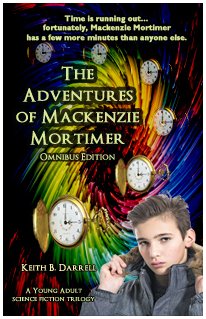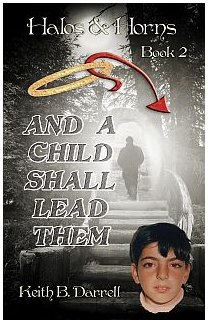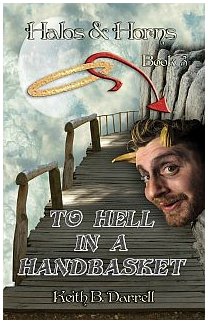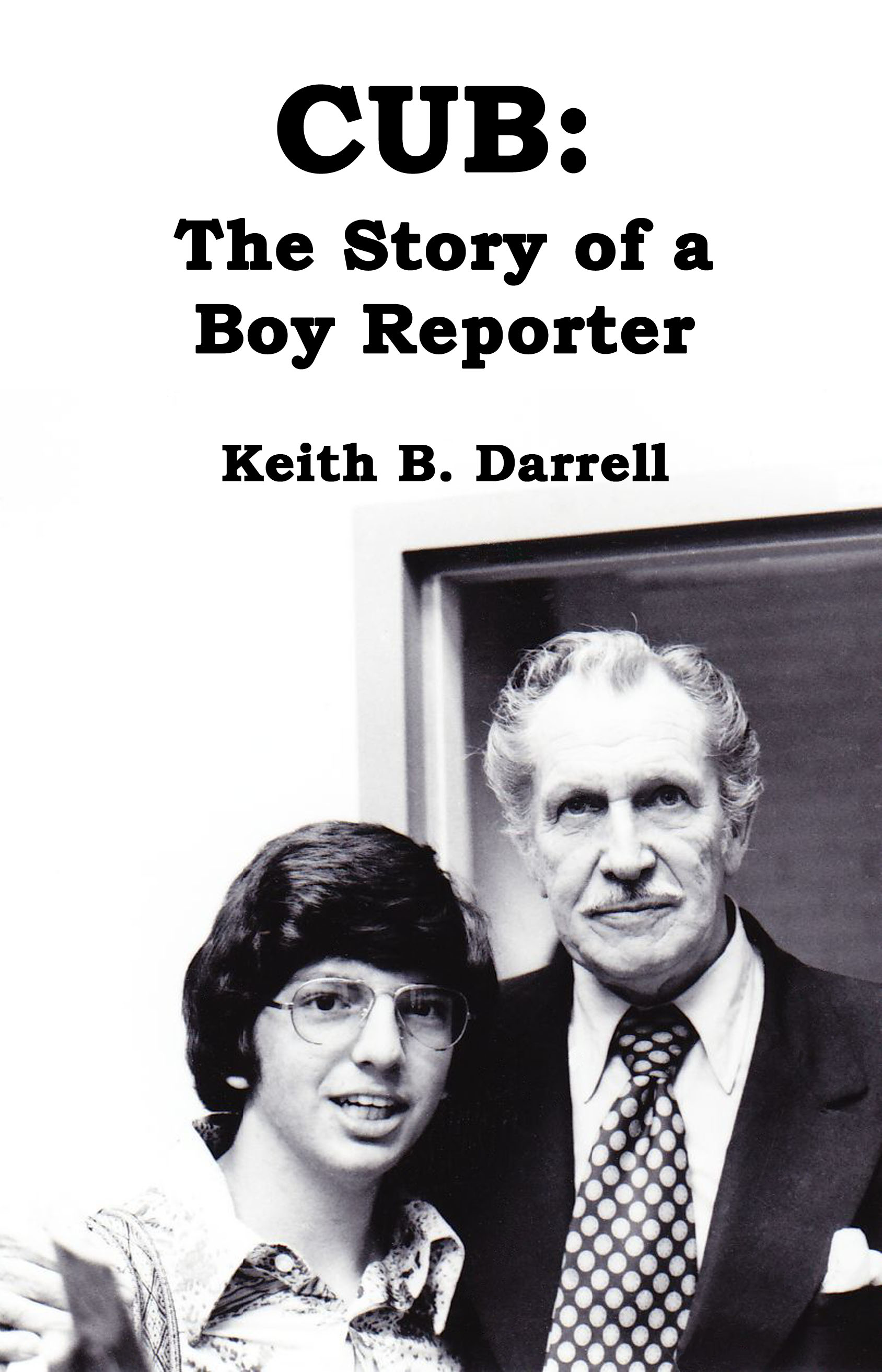| Want to find out more about how the NSA is spying on American Citizens? There's an entire chapter devoted to that topic in the new 10th edition of Issues In Internet Law: Society, Technology, and the Law. | ||
|
Here's what else is in this edition:
The 10th edition of Issues In Internet Law: Society, Technology, and the Law has been updated for 2016 with the latest cases and trends in Internet Law. The new edition also has an expanded glossary and expanded statute and case indexes.
Topics include:
Privacy: Invasion of Privacy, Public Records, Workplace Privacy, Employer & ISP Monitoring, Data Collection, Data Retention, Data Breaches, the Right to be Forgotten; E-Mail & Chat Room Privacy, Web Site Privacy Policies, Behavioral Marketing, Flash Cookies, Device Fingerprinting, Privacy & Children, Metadata, Border Searches, FISA & the USA PATRIOT Act, the NSA, FISA Court, PRISM, XKeyscore;
Free Speech: Defamation, SLAPPs, Gripe Sites, Revenge Porn Sites, Mugshot Sites, Blogs & Vlogs, Obscenity & Pornography, Harassment & Hate Speech, Prior Restraint, Repression, Student Speech, CDA, Anonymous Speech, Commercial Speech, Expressive Conduct;
Social Media: Dangers, Misuse, Ownership, Coerced Access, the Courts;
Cybercrimes: Spam, Phishing, Identity Theft, Spyware & Malware, Cyberstalking, Cyberbullying, Computer Trespass, Wardriving, Virtual Crime;
Intellectual Property: Copyright, Trademark, Patent, Trade Secrets, Creative Commons, Linking, Framing, File-Sharing, Fair Use, Public Domain, Work-Made-For-Hire, DMCA, VARA, Domain Name Disputes, Keyword Advertising, America Invents Act;
Business & the Internet: Internet Taxation, Internet Interstate Commerce, Web Contracts, e-Discovery, Corporate Securities, Crowdfunding, Reg A, Reg D;
Also: Cloud Computing; Digital Currency; Right of Publicity; Web Accessibility; Net Neutrality; Online Reputation Management; Social Media Monitoring; Podcasts; Geofiltering; Digital Journalism; Hyper Local Web Sites, Digital Estate Planning; Sexting; E-Books and many more subjects.
Available from: Amazon.com BN.com (Barnes & Noble) AmberBookCompany.com |
A prolific American writer of short stories, novels, nonfiction books, and newspaper and magazine articles
Saturday, January 30, 2016
Available Now: The 10th Anniversary Edition of Issues in Internet Law
Thursday, January 28, 2016
Swept under the Rug
The thing about news is that it has to be new. The term news
implies information that is fresh, virgin to the eyes and ears of readers and
listeners. Newspapers and television news shows know that their customers don’t
want to see the same thing they saw the day before. So the stories must keep
changing, because otherwise news organizations would lose readers and viewers,
and that means losing advertising dollars. Thus, what you see all boils down to
money… What will make suppliers of your news money. Think about that: your
sources of information, the sources of your ultimate font of knowledge, are
filtered through a pipeline designed with a corporate profit motive in mind.
There’s a pipeline
in Flint, Michigan but the water that flows through that pipeline is
unfiltered. The pipes contained lead, an element known to cause permanent brain
damage and other physical maladies in humans who consume it. It’s not healthy
to drink water flowing through lead pipes. Which made it news when the governor of Michigan
ordered Flint to switch obtaining its drinking water from a pure, glacial lake
to the impure Flint River; dismantle the existing sanitary pipeline running to
the lake; and use lead contaminated pipes to bring river water to the citizens of
Flint to drink and bathe in. Lead poisoning is such a grave threat to human
health that in 1986 the U.S. Congress passed The Safe Drinking Water Act
restricting the use of lead-based materials for delivering drinking water.
Apparently, someone forgot to tell Michigan Gov. Rick Snyder about the federal
law in his attempt to cut a few dollars from the state budget after giving a
huge tax break to Michigan’s wealthiest taxpayers. Not surprisingly, the
inhabitants of Flint who have been drinking and bathing in this water for
several years, young and old, are now suffering the permanent effects of lead
poisoning: nerve damage, brain damage, kidney failure, intermittent abdominal
pain, nausea, diarrhea, constipation, muscle pain, insomnia, delirium, and
hallucinations. Children are particularly susceptible to the effects of lead
poisoning.
The situation in
Flint, Michigan is a hot news story right now. It will be played out in the
days or weeks ahead until it has been milked for everything it can be and the
freshness of the news has worn off. Yes, like milk, news has an expiration
date. The Flint story will be taken off the shelf and replaced with a new,
fresher product for the consumers. The old story will be out of sight and out
of mind as far as the media are concerned. That is the nature of the news
cycle. The problem is, the story isn’t over; the effects of the poisoning on
the inhabitants of Flint are permanent and they will have to live with them for
the rest of their lives long after the news crews have packed up their cameras
and left town.
Water is not the
only thing carried by pipelines; oil also flows through pipelines. In April
2010, the big news story was the Deepwater Horizon oil spill. The BP (a.k.a.
British Petroleum) oil company-contracted Transocean Ltd. Deepwater Horizon oil
rig pumped 210 million gallons of crude oil into the Gulf of Mexico over 87
days, making it the largest oil spill disaster in U.S. history. A federal judge
ruled BP had made “profit-driven decisions” during the drilling of the well
that led to the fatal blowout that killed 11 men. BP lied about the amount of
oil escaping from its pipeline during the ongoing crisis, downplaying the
urgency of the disaster unfolding. The Gulf of Mexico and the shorelines of
Texas, Louisiana, Mississippi, Alabama, and Florida – 16,000 total miles of
coastline – were bathed in 210 million gallons of crude oil.
BP made a big show
of sending people to scrub oil off the beaches, but the environmental damage
was unprecedented and, like that of Flint, Michigan, permanent. The spill area
is home to 8,332 species, including fish, birds, mollusks, crustaceans, sea
turtles and marine mammals. Within six months of the spill, 8,000 birds,
turtles, and mammals were reported dead. The oil spill resulted in the presence
of 40 times more carcinogenic hydrocarbons in the water in which the fish we
eat swim. A 2014 National Oceanic and Atmospheric Administration (NOAA)-funded
study found other toxins in the waters of what it called “one of the most
productive ocean ecosystems in the world”. Another study that year found tuna
exposed to the spill were dying. Fishermen reported fish with oozing sores and
lesions. Researchers found in 2013 that oil on the sea floor did not appear to
be degrading. Dead baby dolphins washed up along the Mississippi and Alabama
shores. A 2015 NOAA study linked a sharp increase in dolphin deaths to the
Deepwater Horizon oil spill.
The devastating
environmental damage from the Deepwater Horizon oil spill is expected to
continue for the next century. But for the news purveyors, the moment had
passed. Video of filthy crude oil bursting from underwater pipes made for
riveting television, but the aftereffects – aside from visuals of oil-coated
waterfowl – no longer met the definition of news. The long-lasting and
permanent effects of this man-made disaster, like those of the one in Flint,
had a short shelf life in media terms and such stories are routinely deemed to
be “over” as the news media search for fresher ones.
Which brings us to
another man-made disaster: climate change. Early on, the media tagged this with
the misnomer of “global warming”, which allowed disingenuous politicians to
misinform their constituents about the severity of the crisis. Global warming
is only one effect of climate change. That doesn’t mean temperatures are rising
everywhere; but it does mean they are rising in the Arctic where the polar ice
caps are melting and glaciers have become green patches of land. It means
rising water levels and changes in tides and the atmosphere that result in
devastating typhoons, hurricanes, snowstorms, and mega storms like Sandy. It
means an increase in the severity and quantity of earthquakes, fires, floods,
and droughts. While the effects of climate change are what we would call natural
disasters, the cause of climate change is man-made. Industrialization has
released greenhouse gases into the atmosphere and the heat trapping emissions –
most notably the burning of fossil fuels – are the culprits.
The Republicans
would have you believe climate change does not exist, while the Democrats harp
on the refrain that we must act immediately to reverse its effects. Like all
politicians, they are lying to you. The truth is that climate change is real
and irreversible. We are long past the point at which we could have reversed
the damage. Barring some unlikely scientific breakthrough, climate change will
eventually cause the planet to be uninhabitable. The only bright spot is that
this will be a relatively slow, albeit inexorable, process and will not occur
within your lifetime, or your children’s, or your grandchildren’s. Therefore,
it’s not news. The story’s over, you can change the
channel.
Climate change,
like the Deepwater Horizon oil spill and Flint, Michigan poisoned water
stories, are all man-made events with devastating permanent consequences. They
make for good news copy when first reported, but the news media know the
public’s attention span does not extend to long-term, complicated stories. So
they stop covering them, move on to something new, something flashier, and the
public assumes those stories are over. But they’re not. They’ve simply been
swept under the rug to make way for the next “crisis ”. The public may banish
them from its collective memory, but it does so at its peril, because these
crises have not gone away simply because the media no longer reports on them.
Friday, January 22, 2016
The Question You’re Dying To Ask
Since I’m hard at work writing a new novel, I’m going to turn to you to help me crowd source next month’s blog columns. Send in your questions on any topic for me to answer in upcoming blog posts. Ideally, I’d love to respond to questions about my books –
both published and forthcoming – but I’ll be happy to discuss the craft of writing or any of the myriad of topics we’ve visited on this blog since it began in March 2011.
I realize many readers may be hesitant to participate because of privacy concerns, so unless you specifically ask to have your name used, I’ll publish your questions anonymously in Q&A format. If you do wish to have your name appear in the blog, you may also include your city, state, and country. However, I won’t list email addresses because there are scrapers that collect addresses from websites to put on spam mailing lists. I’ll include links to your website if it’s pertinent to the topic of your question, or your personal website, but not for people just trying to get web traffic to their business.
Please send all questions to “KeithBDarrell (at) AmberBookCompany.com” rather than asking them on Facebook, GoodReads, or any of the other individual sites to which this blog is syndicated, so all the questions will end up in the same place.
both published and forthcoming – but I’ll be happy to discuss the craft of writing or any of the myriad of topics we’ve visited on this blog since it began in March 2011.
I realize many readers may be hesitant to participate because of privacy concerns, so unless you specifically ask to have your name used, I’ll publish your questions anonymously in Q&A format. If you do wish to have your name appear in the blog, you may also include your city, state, and country. However, I won’t list email addresses because there are scrapers that collect addresses from websites to put on spam mailing lists. I’ll include links to your website if it’s pertinent to the topic of your question, or your personal website, but not for people just trying to get web traffic to their business.
Please send all questions to “KeithBDarrell (at) AmberBookCompany.com” rather than asking them on Facebook, GoodReads, or any of the other individual sites to which this blog is syndicated, so all the questions will end up in the same place.
Wednesday, January 20, 2016
The Story Behind The Lobster Thriller
I noted earlier today on Facebook the kind shout-out from Dogo Books to The Lobster Thriller, my short story for kids. It occurred to me that the story behind The Lobster Thriller was almost as entertaining as the tale itself!
Searching for new markets to sell my short stories to, I
stumbled across an odd little e-zine called The Journal of Unlikely
Entomology. I perused their submission requirements, mentally checking off
which ones I met. Speculative fiction? Check. Weird stories? Check.
Avant-garde? Check. Reprints? Check. “Beautifully written fiction, characters
that grab us by the throats and refuse to let go until their stories have been
told, worlds that draw us in and demand to be explored?” Check. Bugs? WTF?
Ah, entomology: the study of insects. Houston, we have a
problem. Did any of my stories have insects in them? I did a quick inventory
and remembered my 2009 Christmas story. I write an annual Christmas story and
that year it was “A Christmas Present For Ashley”, the crucifixion
tale told from the POV (point of view) of a Madagascar hissing cockroach.
Check.
What appealed to me most about the e-zine was its panache: a
take-off on the haughty, 19th century style reminiscent of The AcmeNovelty Library. So, using my best Chris Ware impression, I dashed off an
e-mail to the publisher:
I ran across The Journal Of Unlikely Entomology and thought it might provide a suitable home for "A Christmas Present For Ashley". Until now, I had categorized this as a Christmas piece, not realizing there might be a discrete market for tales of a Madagascar hissing cockroach. Note, this would fall under the heading of reprint rights, as it has appeared in two anthologies, but I am submitting it for your consideration because it seemed the perfect piece for The Journal Of Unlikely Entomology.
Should you by any chance start a sister publication, The Journal of Unlikely Crustaceology, please advise me, as I would finally have a place for my lobster thriller.
It was 3 a.m. and I was a bit tired and giddy, so I might be
excused for the flippant attempt at humor. I presumed anyone who could craft
The Journal of Unlikely Entomology would share my wry sense of humor and laugh
at the concept of a companion journal for crustaceology (the study of
crustaceans) and the preposterous notion of the genre of lobster fiction. A few
days later, I received this reply:
Just found this in the spam folder, for reasons I can't fathom…
After all these years of writing, I’m used to my submissions
landing in far worse places than a spam filter, so I continued reading.
We do have a policy of accepting a maximum of one reprint per issue, which does cut the odds. On the other hand, lobsters are bugs. Sort of…. We'd be happy to take a look at your lobster thriller.
They probably would not be interested in the story I sent,
but might want to publish my lobster thriller! Omigod! I laughed until
endorphins dripped from my eyelids. Then, I sobered up. I remembered I didn’t
have a lobster thriller. I didn’t even know what a lobster thriller was! What to
do? I considered telling them the reference to a lobster thriller was a joke,
but in my experience, people only find jokes funny when they are in on them. If
they missed the joke and later have it pointed out, they tend to be embarrassed
and become resentful, if not rancorous. Not a good way to entice them into
publishing my story.
There was only one option: write a lobster thriller in 24
hours. I can never resist a writing challenge. Now, what the hell is a lobster
thriller? It should have the elements of a thriller and somehow revolve around
a lobster, I concluded. There were two choices: (1) a story in which a lobster
is the main character or (2) a Maltese Falcon tale, where the lobster is the
object sought by the characters. Since I had already submitted a story told
from a cockroach’s POV, I chose the second option. A friend had challenged me
to write a Young Adult story, so I figured, what the hell. The next day, I had
“The Lobster Thriller” — a 5,000–word Young Adult lobster thriller. I had not
only crafted a new story; I had created an entirely new genre!
The following day, I was stricken with a life-threatening
medical issue and “The Lobster Thriller” and everything else in my life got
placed on the back burner for several weeks. When life settled down, I realized
I had never gotten around to sending the “The Lobster Thriller” to the e-zine. Oops.
So, that’s how I came to write a story about Chinese spies,
biological warfare, a Vietnamese fisherman, a lighthouse, and 16-year-old
Wesley Snodgrass’ misadventure with a yellow lobster. Click on the cover below
to begin reading “The Lobster Thriller”!
Tuesday, January 19, 2016
The New 2016 Edition of Issues In Internet Law Has Just Been Published!
| Want to find out more about how the NSA is spying on American Citizens? There's an entire chapter devoted to that topic in the new 10th edition of Issues In Internet Law: Society, Technology, and the Law. | ||
|
Here's what else is in this edition:
The 10th edition of Issues In Internet Law: Society, Technology, and the Law has been updated for 2016 with the latest cases and trends in Internet Law. The new edition also has an expanded glossary and expanded statute and case indexes.
Topics include:
Privacy: Invasion of Privacy, Public Records, Workplace Privacy, Employer & ISP Monitoring, Data Collection, Data Retention, Data Breaches, the Right to be Forgotten; E-Mail & Chat Room Privacy, Web Site Privacy Policies, Behavioral Marketing, Flash Cookies, Device Fingerprinting, Privacy & Children, Metadata, Border Searches, FISA & the USA PATRIOT Act, the NSA, FISA Court, PRISM, XKeyscore;
Free Speech: Defamation, SLAPPs, Gripe Sites, Revenge Porn Sites, Mugshot Sites, Blogs & Vlogs, Obscenity & Pornography, Harassment & Hate Speech, Prior Restraint, Repression, Student Speech, CDA, Anonymous Speech, Commercial Speech, Expressive Conduct;
Social Media: Dangers, Misuse, Ownership, Coerced Access, the Courts;
Cybercrimes: Spam, Phishing, Identity Theft, Spyware & Malware, Cyberstalking, Cyberbullying, Computer Trespass, Wardriving, Virtual Crime;
Intellectual Property: Copyright, Trademark, Patent, Trade Secrets, Creative Commons, Linking, Framing, File-Sharing, Fair Use, Public Domain, Work-Made-For-Hire, DMCA, VARA, Domain Name Disputes, Keyword Advertising, America Invents Act;
Business & the Internet: Internet Taxation, Internet Interstate Commerce, Web Contracts, e-Discovery, Corporate Securities, Crowdfunding, Reg A, Reg D;
Also: Cloud Computing; Digital Currency; Right of Publicity; Web Accessibility; Net Neutrality; Online Reputation Management; Social Media Monitoring; Podcasts; Geofiltering; Digital Journalism; Hyper Local Web Sites, Digital Estate Planning; Sexting; E-Books and many more subjects.
Available from: Amazon.com BN.com (Barnes & Noble) AmberBookCompany.com |
Wednesday, January 13, 2016
Powerball Fever
It's Wednesday, and while that day is celebrated in offices around the world as “hump day”, here at Chez Keith it is better known by the appellation “garbage night”, for this is the day that heralds the weekly chore of lugging the trash to the curb – although, in truth, the plastic bag is seldom heavy enough to be “lugged”, the curb is a mere five feet away, and while ostensibly still a “chore”, the task requires more thought than effort. But today is also lottery night, and with the Powerball Jackpot having surpassed the one-billion dollar mark, Wednesday night has taken on an entirely new dimension.
I decided to throw my hat into the ring. I searched the Internet to learn where I could purchase lottery tickets. The better question, it seems, would have been Where can't lottery tickets be purchased? In a land where one can search in vain for affordable health care or an honest politician, lottery tickets were literally available on every street corner.
My next obstacle was the cost. I had no idea what these pieces of blue sky sold for, and wondered if I had enough change in my pocket. I was surprised to learn Powerball tickets cost $2 a piece. This presented a budgetary quandary – it would mean forgoing my nightly Cadbury Dark Chocolate candy bar. Besides the obvious pleasure of enjoying one of the most important food groups, a single Cadbury Dark Chocolate bar provides 100% of the minimum daily requirement of chocolate. Purchasing a lottery ticket would entail sacrificing my health and nutritional needs, but so be it.
Next, I had to choose the numbers. I had researched this online, as well, and found “expert advice” advising me to avoid 3, 7, and 14 because those numbers won most often and were chosen frequently, and would likely lead to my having to share my $1.3 billion winnings with others. I pondered the warped logic of why it would be better to choose losing numbers and keep nothing all for myself than to select numbers that might actually appear on the winning ticket, even if it meant receiving a paltry $625 million. It seemed to me, I could do quite well with only $625 million. In fact, $1 million would improve my circumstances considerably, but apparently this was chicken scratch to the Internet guru.
The online expert also recommended buying lots of tickets because that would increase the chances of winning. I suppose, were this a question on a statistics exam, I would have to agree the odds might be nudged infinitesimally, but real life doesn’t work that way. The odds of winning are calculated at 225 million –to-one. Now, I know my math is off, but if I wanted to knock those odds down to the odds of an all-or-none coin toss, how many tickets would I have to buy? 112 million? At $2 a piece. And then, I ‘d still have a 50-50 chance of walking home without a dime. No, random means random. I think I’ll have just as much luck as anyone else if I buy one ticket. The guy in front of me buying 100 tickets and I will have one thing in common tomorrow—neither of us will be $1.3 billion richer, but I’ll only be $2 poorer.
Of course, if I did win the lottery, I would soon be approached by long-lost friends who suddenly added me to their Christmas lists, distant relatives who discovered me via genealogy software, and enough charitable donation seekers to make a pack of Girl Scouts armed with cookies seem a welcome sight. Most lottery winners end up losing friends, squandering the money, finding new (or expanding on existing) vices like alcohol and hookers, committing suicide, or even being murdered.
I stared at my winning lottery ticket. (I’ve learned that every lottery purchaser believes he or she has acquired the holy grail, that single slip of paper that will ensure a “happily ever after”). I tucked it neatly in the plastic bag, tied the drawstrings, and lugged the garbage bag to the curb, secure in the knowledge that I had won the Powerball lottery and had emerged unscathed.
Saturday, January 2, 2016
Hair - the Age of Aquarius
I was at the barber shop the other day and I ran into a guy
who... what's that? OK, you're right. I
admit it: I haven't been to a barber shop since I turned 14 and had my last
50-cent haircut. The Vitalis, greased back wet look was on the way out and the blown-dry
"dry look" was in vogue, so with the start of junior high, I
convinced my mother to do what all the cool kids at school were doing and have
my hair not cut by Sam the barber but instead coiffed by a men's hair stylist.
The storefront bay was dimly lit and filled with the scent
of burning incense. Jimi Hendrix's guitar reverberated through the eight-track
system's carefully arranged speakers. Blacklights eerily illuminated posters on
the walls and lava lamps adorned the reception desk and several coffee tables.
Copies of Rolling Stone magazine, Zap Comix, and the Daily Planet (an
underground newspaper the local hippies hawked on street corners for a quarter)
were scattered across the tables, along with a few roach clips. I didn't think
my mother knew what a roach clip was, but I nonchalantly covered them with the
newspaper anyway. Why take a chance of getting barred from such a cool place?
My hairstylist introduced himself as Mister Lucky, or Lucky
for short. I never knew his real name. Not that it mattered. He was a persona,
not a person. That's how he wanted it: a virtuoso coiffeur, larger than life.
He had ego, he had flair, and he had panache.
More importantly, he had talent when it came to cutting hair, so I
traded in the Opie Taylor look for the David Cassidy style. It cost $10 and
even Mister Lucky’s tip was twice the cost of a barber shop haircut, but when I
look back on those days and recall my tie-dyed shirt, bell-bottom slacks, and
Peter Max sneakers, I can thank Mister Lucky that at least he made my hair look
cool.
I found another gray hair today. I keep pulling them out,
but they’re like hydras: for every one I yank, two more sprout elsewhere.
Mister Lucky would know what to do. I guess I’ll just have to accept aging
gracefully. The years go by so quickly as you get older. And now, another has
passed. Happy New Year.
Subscribe to:
Posts (Atom)

















































